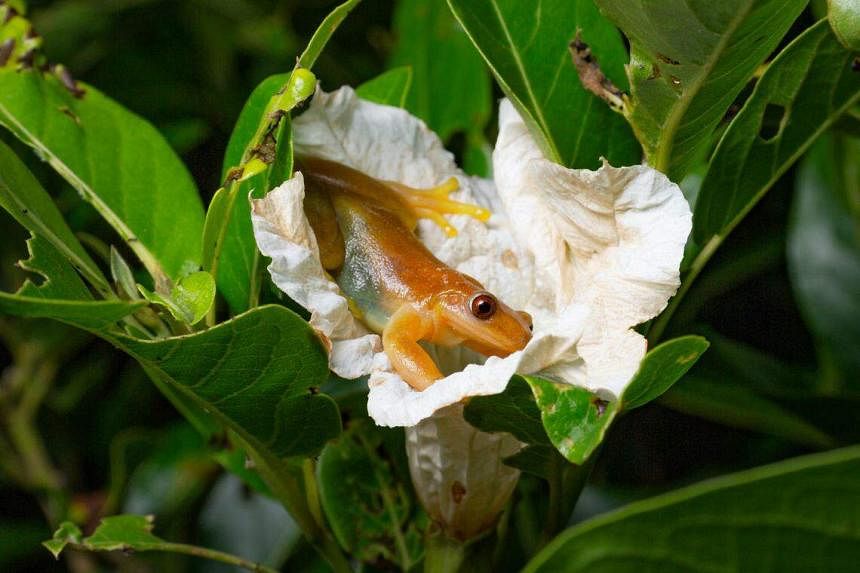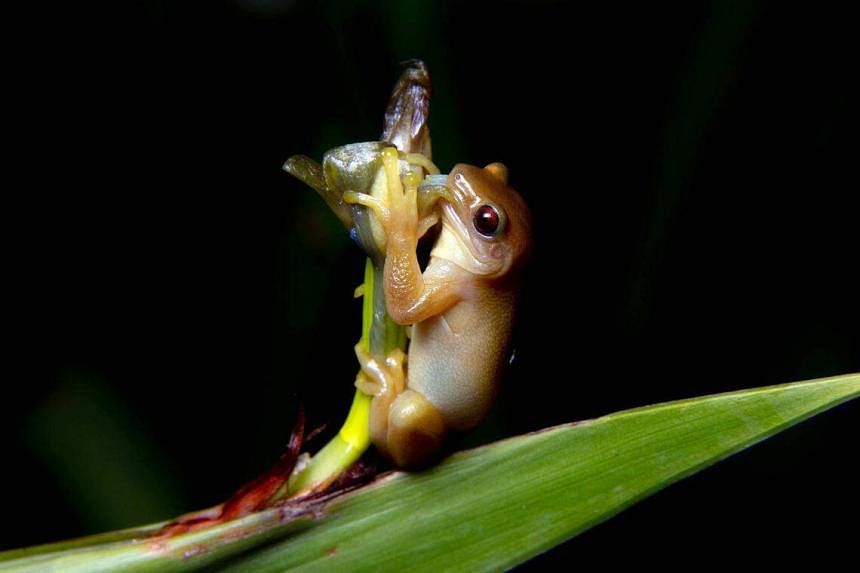When the forest fauna goes to sleep, a tree frog prowls the coastal Atlantic Forest of Brazil during nightly expeditions in search of the milk fruit tree, drawn to the delectable nectar inside its trumpet-shaped flowers and the creamy white fruit.
In December 2020, Dr Luis Felipe Toledo, head of the Amphibians Natural History Lab at the University of Campinas in Brazil, and his team observed the feeding activity of five individuals of Xenohyla truncata in eastern Brazil’s Restinga forests.
The frogs emerged from the flowers with pollen grains stuck to their backs, providing evidence that frogs may act as pollinators, the team reported in Volume 35 of the Food Webs scientific journal.
It was the first time a frog – or any amphibian – has been observed pollinating a plant.
Measuring about 3-4cm long and native to the state of Rio De Janeiro, the Xenohyla truncata – more commonly known as Izecksohn’s Brazilian Treefrog – has unlocked a new understanding of ecological interaction between flowering plants and amphibians.
Research on this species has gained traction due to its distinct frugivorous (fruit) diet, unlike other tree frogs that consume flies, ants and other small invertebrates after metamorphosis from a tadpole.
Their sleek body, elongated limbs and pointed snout differentiate them from other frog species and enable them to navigate through flowering plants such as bromeliads, orchids and other flowers, which are essential to their diet.
“Most frogs eat live prey like insects, and are carnivores. This vegetarian frog is quite unique. Due to this tree frog’s frugivorous diet, they then become inadvertent vehicles for pollen, and can serve as pollinators,” said Professor Antonia Monteiro from the Department of Biological Sciences at the National University of Singapore, who was not involved in the discovery.
Mr Carlos Henrique De-Oliveira-Nogueira, who was part of the research team, told The Straits Times: “We were conducting monitoring for a private company and we were lucky to find the species in the work area. It wasn’t something planned. I would say it was a stroke of luck.
“Thus far, it is the only species in the world with the potential for pollination... It is highly unlikely for another species to exhibit a similar behaviour.”
In the process of foraging, the tree frog goes head-first into the flowers, its butt sticking out and consumes the nectar using suction-like movements.

The pollen grains attached to the back and head of the treefrog can help pollinate when it visits another flower of the same species.
Apart from flowers, these tree frogs can be spotted nibbling on fruit and sucking on the pulp through the hole made in the fruit.
According to the International Union for Conservation of Nature, this neotropical tree frog species is listed under the Red List as a Near Threatened species. Near Threatened suggests that though it is not considered vulnerable or endangered, the species is close to being threatened in the future.
The changing climate paired with rising sea levels have already been suggested as possible factors contributing to the future decline of this species.
More studies are being conducted to understand the novel relationship between this amphibian and plants.

